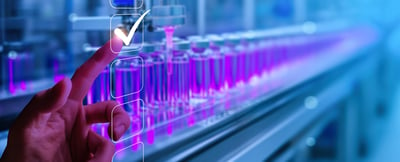In the race to develop life-saving therapies, pharmaceutical companies are also navigating a parallel sprint: protecting intellectual property. Patent disputes in the UK are intensifying, driven by biosimilar competition, global enforcement pressures, and the sheer complexity of technical data. For legal teams, eDiscovery is no longer a back-office function—it’s the engine of defensible, high-speed litigation.
UK Courts and Cross-Border Patent Enforcement in Pharma
The UK has emerged as a strategic venue for global IP litigation. The High Court and Court of Appeal are increasingly relied upon to resolve disputes involving standard essential patents (SEPs), FRAND licensing, and pharmaceutical exclusivity. Recent cases such as InterDigital v Lenovo and Panasonic v Xiaomi have cemented the UK’s reputation as a forum for complex, high-value IP trials.
For pharmaceutical companies, this means that patent enforcement is no longer confined to domestic borders. Biosimilar and generic manufacturers often operate across jurisdictions, and UK-originating litigation may trigger parallel proceedings in the EU, US, and Asia. Legal teams must prepare for coordinated discovery strategies that span continents and regulatory regimes.
The Data Challenge in Biosimilar and Generic Disputes
Patent disputes in pharma are uniquely data-intensive. Biosimilar litigation, for example, involves:
- Manufacturing Process Data: Including cell line development, purification protocols, and batch records.
- Clinical Trial Results: Covering pharmacokinetics, immunogenicity, and comparative efficacy.
- Regulatory Submissions: From MHRA filings to EMA correspondence.
Generic disputes add layers of complexity with formulation data, bioequivalence studies, and marketing authorisation records. These documents are highly technical, often multilingual, and scattered across R&D, regulatory, and commercial departments.
eDiscovery for R&D Records and Technical Documentation in IP Disputes
Modern eDiscovery platforms are built to handle this complexity. They can ingest structured and unstructured data from lab notebooks, scientific databases, and regulatory systems. Natural language processing (NLP) enables keyword expansion across scientific terminology, while metadata analytics help identify custodians and timelines.
For example, in a biosimilar patent challenge, eDiscovery can surface internal emails discussing manufacturing tweaks that may infringe a reference product’s patent. It can also trace the evolution of technical specifications across product iterations—critical in proving or disproving infringement.
AI-Supported Privilege Review in High-Stakes Cases
Privilege review in pharma IP litigation is particularly fraught. Communications between scientists and legal counsel often blend technical and legal content. AI-supported review tools can:
- Flag potentially privileged content based on context and sender-recipient patterns.
- Learn from reviewer decisions to improve accuracy over time.
- Reduce false positives that slow down production timelines.
In high-stakes disputes—where injunctions or market access are on the line—speed and precision in privilege review can make or break a case.
Why Defensibility Matters in UK Patent Enforcement
UK courts demand rigorous defensibility in discovery. Parties must demonstrate that their review protocols are consistent, auditable, and proportionate. The Civil Procedure Rules (CPR) Part 31 and Practice Direction 31B set clear expectations for electronic disclosure, including the use of technology-assisted review.
Failure to meet these standards can result in adverse inferences, cost penalties, or even dismissal of claims. For pharmaceutical companies, defensibility is not just a legal requirement—it’s a reputational safeguard.
Final Thoughts
As innovation accelerates, so does the pace of litigation. UK pharmaceutical companies must be ready to defend their IP with the same precision they apply to drug development. At Array, we empower legal teams with eDiscovery workflows tailored to the complexity of pharma patent disputes—ensuring speed, accuracy, and defensibility at every stage.
Sources:
Life Sciences & Pharma IP Litigation 2025 – Chambers Global Practice GuideJUVE Patent: Top Cases in UK Patent Litigation 2025




.jpg?width=400&name=iStock-2222660797%20(1).jpg)